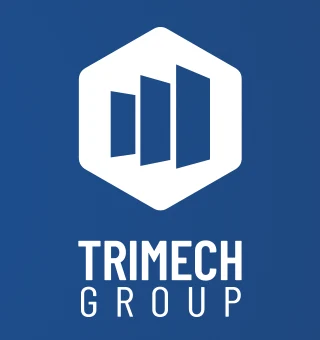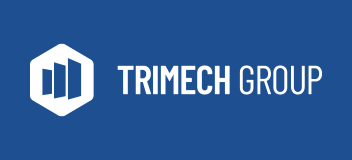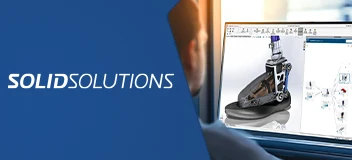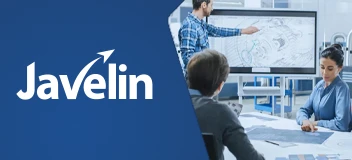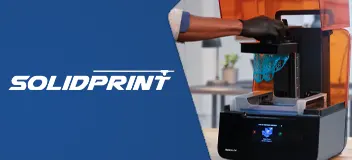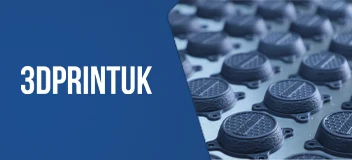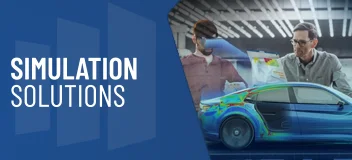Geometric Dimensioning and Tolerancing Advanced Overview
This classroom based training is designed as a further in-depth course to help understand, interpret and apply the principles of GD&T. It is based on the ASME Y14.5-2018 standard.
By definition, GD&T establishes uniform practices for stating and interpreting dimensions, tolerancing, and related requirements for use on engineering drawings and in related documents.
Why take this course
GD&T is essential to ensure functional information and design intent from the assembly to its individual parts. This insures accurate fitting assemblies and spare parts regardless of where they are manufactured.
The GD&T Advanced course is ideal for Designers, toolmakers, inspectors and project managers.
What the course covers
Our Geometric Dimensioning and Tolerancing advanced course covers the fundamentals and principles of the ASME Y14.5-2018 GD&T standard. The course focuses on the geometric characteristic symbols explaining in detail each symbol, feature control frames, different modifiers and how they affect tolerancing when placed in the feature control frame.
The course also goes reviews the types of tolerances and the individual geometric characteristic symbols and their tolerance zone. Further explanation on profile tolerances (all round, between points, unequally disposed). Comparison of different characteristics for application purposes.
Geometric Dimensioning and Tolerancing Advanced Course Requirements & Benefits
Understand the course requirements and the skills you will acquire after completing the GD&T Advanced course
"The GD&T Advanced course helped me to understand the true function of the part and its relationship to mating surfaces. The instructor was able to carry the course at an excellent speed leaving students enough time to grasp the concept."
— Steven Cargnello, Marsh Brothers Aviation.
Geometric Dimensioning and Tolerancing Advanced Lessons
The following lessons are included in the course
Lesson 1: Course Introduction
- Course objectives, general review of GD&T principles
Lesson 2: Characteristics and Symbols
- Review of types of tolerances and the individual geometric characteristic symbols and their tolerance zones
- Further explanation on profile tolerances (all round, between points, unequally disposed)
- Comparison of different characteristics for application purposes
Lesson 3: Modifiers
- MMC, LMC, RFS and how they affect tolerance zones when applied in feature control frames.
- Datum modifiers (MMB, LMB and RMB)
Lesson 4: Composite and Segmented Feature Control Frames
- Composite feature control frames compared to segmented feature control frames (position and profile composites)
Lesson 5: Exercises and Design Applications
- Series of Application exercises and design of mating parts exercises
Lesson 6 Tolerance stacks and tolerance build-up calculations
- Plus minus stacks both symmetrical and bilateral tolerancing
- Profile tolerance stacks
- Profile tolerance stacks (form and orientation considerations)
- Profile assembly stacks
- Boundary detail stacks
- Fixed fastener and floating fastener calculations
- Application exercises looking at applying GD&T to components of an assembly
Training Methods
Choose the training method right for you

Group/Public Training
Receive training as a group (limited amount per class) from certified instructors using vendor approved training content and methodologies.
Training is delivered either live online or in a traditional classroom environment.
Advantages
- Cost effective training method.
- More effective than video based training, with videos learners are often not as focused on the training and skip exercises.
- Learn more through group questions and feedback.

Private Training
This style of flexible training is perfect for teams or individuals who are faced with a specific challenge and require personalized courses with on-the-job coaching.
Training is available live online, in-person classroom or onsite at your location.
Advantages
- Use our state-of-the-art mobile classroom at your facility.
- Bring your team up to a consistent level of knowledge by having them take the same training at the same time.
- Benefit from flexible scheduling options.
Upcoming Training Courses
Choose a scheduled Geometric Dimensioning and Tolerancing Advanced course
Are you using SOLIDWORKS to its full potential?
Enhance your skills and capabilities with a SOLIDWORKS Training Assessment from TriMech.
